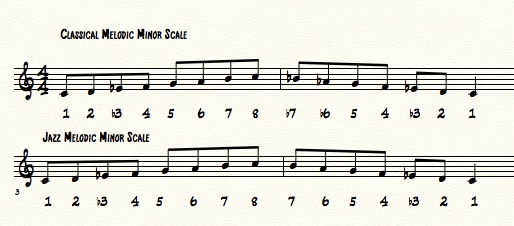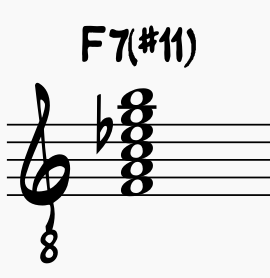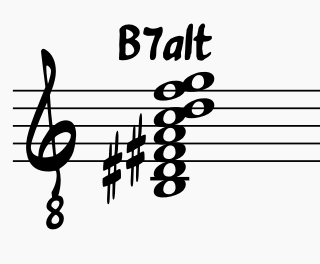If you already feel comfortable with the major scale and all its modes, chances are you are looking beyond to find different scales and sounds you can incorporate into your jazz playing.
You may have noticed that the natural minor scale doesn’t always seem to capture the harmony of the moment. You will need more tools in your toolbox to capture more of the “jazz sound” in your solos.
To get that jazz sound, the next scale you should focus on is the melodic minor scale.
In this article, we’ll explore the melodic minor scale and its modes and reveal four essential applications of the scale in jazz improvisation. By the end, you’ll know the melodic minor scale and its modes and be able to wield them effectively when soloing or comping over jazz standards.
If you struggle with scales and want to level up your jazz playing, check out the Learn Jazz Standards Inner Circle.
With instrument-specific courses to help you achieve technical mastery of your instrument, comprehensive jazz standard studies to help you learn the jazz language through the music itself, and essential practice guides, ear training studies, and improvisational masterclasses…
…the Inner Circle has everything you need to become the best jazz player you can be.
Ready to overhaul your jazz playing? Come see what the Inner Circle has to offer.
Table of Contents
What is the Melodic Minor Scale Formula?
The basic requirement of a minor scale is that it has a minor third interval rather than a major third interval.
Outside of this basic requirement, there can be a lot of variation within a minor scale, and most differences come down to the arrangement of whole and half steps within the scale. The melodic minor scale differs from other minor scales, like the natural minor scale, because it has natural sixth and seventh degrees.

- Notes: C-D-Eb-F-G-A-B-C
- Intervals: Rt.-2-b3-4-5-6-7-Rt.
- Steps: W-H-W-W-W-W-H
There are two ways to think about the melodic minor scale when comparing it to other scales:
- A C melodic minor scale has all the same intervals as a C major scale, except it has a minor third rather than a major third scale degree.
- C-D-E-F-G-A-B-C vs. C-D-Eb-F-G-A-B-C
- A C melodic minor scale is like a natural minor scale but with major sixth and seventh scale degrees rather than minor sixth and seventh scale degrees.
Music Theory: Melodic Minor Scale in Classical Music vs. Jazz Music
In classical theory, the melodic minor has two forms depending on whether you are ascending or descending. So, what are these two forms?
In classical music, the ascending form is exactly the same as the “jazz minor” scale version. When playing the ascending form, you’ll play a natural 6th and 7th.
However, the descending form is different. The descending melodic minor scale has a minor 6th and 7th interval. It is identical to the natural minor scale.
The difference between ascending and descending exaggerates the lightness of the scale when moving up and the heaviness of the scale when moving down. It’s a really cool effect, but it doesn’t get much use in jazz.
In jazz, improvisers choose notes based on the harmony of the moment. Usually, it doesn’t make sense to have two different pitch collections for ascending and descending (unless the harmony was intentionally written that way).
Classical Melodic Minor Scale (Different Ascending and Descending Forms):
- Ascends: Rt.-2-b3-4-5-6-7-Rt. (identical to the “jazz minor” scale)
- Descends: Rt.-b7-b6-5-4-b3-2-Rt. (identical to the natural minor scale)

That’s why we keep the sixth and seventh degrees natural when using the melodic minor scale in jazz (whether we are ascending or descending).
Other Common Types of Minor Scales:
Knowing other minor scales helps you easily identify the factors that make each scale different. The following four minor scales have different scale degrees that make them unique from one another, and the melodic minor scale.
The first three minor scales are modes of the major scale and can be found in diatonic major and minor keys:
- Aeolian mode or natural minor scale (the tonic in minor keys)
- Dorian Mode
- Phrygian Mode
The last one is the harmonic minor scale, which is non-diatonic like the melodic minor scale. It has its own modes and seventh chords.
1. The Natural Minor Scale (also known as the Aeolian mode or 6th mode of the major scale):

- Notes: C-D-Eb-F-G-Ab-Bb-C
- Intervals: Rt.-2-b3-4-5-b6-b7-Rt.
- Steps: W-H-W-W-H-W-W
2. Dorian (the second mode of the major scale):

- Notes: C-D-Eb-F-G-A-Bb-C
- Intervals: Rt.-2-b3-4-5-6-b7-Rt.
- Steps: W-H-W-W-W-H-W
3. Phrygian (the third mode of the major scale):

- Notes: C-Db-Eb-F-G-Ab-Bb-C
- Intervals: Rt.-b2-b3-4-5-b6-b7-Rt.
- Steps: H-W-W-W-H-W-W
4. Harmonic Minor Scale:

- Harmonic Minor Scale Notes: C-D-Eb-F-G-Ab-B-C
- Harmonic Minor Scale Intervals: Rt.-2-b3-4-5-b6-7-Rt.
- Harmonic Minor Scale Steps: W-H-W-W-H-+2nd-H
Practice Tip: When memorizing these different minor scales, note the factors that make each unique! Remember, melodic minor scales have a natural sixth and a natural seventh scale degree. A natural minor scale has a minor sixth and seventh scale degree.
If you need a refresher on the modes of the major scale, check out our guide to the seven modes of the major scale.
Seven Modes of the Melodic Minor Scale (and Melodic Minor Chords)
The melodic minor scale has seven notes in it. Therefore, there are seven different modes contained within the melodic minor scale. You can consider each of the notes in the melodic minor sequence as its own root note.
You get six other scales with unique sounds and characteristics when you do this. Some of these melodic minor scale modes are extremely useful for jazz improvisation. We’ll get into the specific uses for some of them later on.
Here are the seven modes of the melodic minor scale:
1. Melodic Minor Scale
We’ve already covered this above, but here it is again:

- Notes: C-D-Eb-F-G-A-B-C
- Intervals: Rt.-2-b3-4-5-6-7-Rt.
- Steps: W-H-W-W-W-W-H
2. Dorian Flat 2

- Notes: D-Eb-F-G-A-B-C-D
- Intervals: Rt.-b2-b3-4-5-6-b7-Rt.
- Steps: H-W-W-W-W-H-W
BEFORE YOU CONTINUE...
If music theory has always seemed confusing to you and you wish someone would make it feel simple, our free guide will help you unlock jazz theory secrets.

3. Lydian Augmented

- Notes: Eb-F-G-A-B-C-D-Eb
- Intervals: Rt.-2-3-#4-#5-6-7-Rt.
- Steps: W-W-W-W-H-W-H
4. Lydian Dominant

- Notes: F-G-A-B-C-D-Eb-F
- Intervals: Rt.-2-3-#4-5-6-b7-Rt.
- Steps: W-W-W-H-W-H-W
5. Mixolydian b6

- Notes: G-A-B-C-D-Eb-F-G
- Intervals: Rt.-2-3-4-5-b6-b7-Rt.
- Steps: W-W-H-W-H-W-W
6. Locrian Natural 2

- Notes: A-B-C-D-Eb-F-G-A
- Intervals: Rt.-2-b3-4-b5-b6-b7-Rt.
- Steps: W-H-W-H-W-W-W
7. Super Locrian (Altered scale)

- Notes: B-C-D-Eb-F-G-A-B
- Intervals: Rt.-b2-b3-3-b5-b6-b7-Rt.
- Steps: H-W-H-W-W-W-W
Four Common Melodic Minor Modes Used In Jazz Improvisation
The four most important modes of the melodic minor scale you need to memorize and start practicing are:
- Melodic minor scale
- Lydian augmented (3rd mode of the melodic minor scale)
- Lydian dominant (4th mode of the melodic minor scale)
- Super locrian/Altered scale (7th mode of the melodic minor scale)
These modes are used regularly by jazz musicians when improvising over different chords.
Melodic Minor Scale
The melodic minor scale can be played over a min(Maj7) chord because of the major 7th interval in both the chord and the scale.

This seventh chord is constructed by taking a minor triad and adding a major seventh interval instead of a minor seventh interval. For a Cmin(maj7) chord, you’d spell it like so:
- M7th – B
- 5th – G
- m3rd – Eb
- Rt. – C
One tune that famously uses this chord is Miles Davis’s Solar.
Lydian Augmented
The 3rd mode of the melodic minor scale is a Lydian scale with a #5. This scale will work over maj7 chords with a #5. Though not as common as other 7th chords, Maj7(#5) chords do occur in jazz.

You can build a maj7(#5) chord by taking an augmented triad (a root, major 3rd, and augmented 5th) and adding a major 7th.
Let’s spell out an Ebmaj7#5 chord:
- M7th – D
- Aug5th – B
- M3rd – G
- Rt. – Eb
The Wayne Shorter tune Iris utilizes a maj7(#5) chord in its chord progression.
Lydian Dominant
The 4th mode of the melodic minor scale is a Mixolydian scale with a #4. This works well over dominant chords that have a #11. 7(#11) chords are found all over jazz tunes and are commonly associated with the “dominant II” chord.

Here is how you’d spell out an F7(#11) chord (you don’t need to include all the notes shown when playing):
- #11th – B
- 9th – G
- m7th – Eb
- 5th – C
- M3rd – A
- Rt. – F
The “dominant II sound” can be heard in many jazz standards, from Donna Lee and Confirmation to Just Friends (to name a few).
Super Locrian/Altered Scale
The 7th mode of the melodic minor scale is associated with altered chords. With altered chords, some or all of the chord’s upper extensions (9th, 11th, and 13th) are altered. Not all of these altered notes have to be present.

Altered extensions:
- b13th/#5th – G
- b5th/#11th – F
- #9th – D
- b9th – C
7alt chords are common in various jazz contexts but are often used in minor iiø-V-i progressions.
Using The Same Melodic Minor Lick Over Different Chords:
Here is the same melodic minor lick used over all four chords we discussed. Despite being the same lick, the various modes contained within the melodic minor scale ensure that this lick works over four different pitch environments.

PDF: Melodic Minor Lick Over Different Chords
Melodic Minor Scale Summary
The melodic minor scale formula differs from a natural minor scale at two scale degrees:
- In a melodic minor scale, the 6th and 7th scale degrees are natural (major sixth and major seventh)
- In a natural minor scale, the 6th and 7th scale degree are minor (minor sixth degree and minor seventh degree)
In classical music theory, ascending and descending melodic minor scales are different:
- The ascending version has a natural 6th and 7th scale degree (jazz minor scale)
- The descending version has a minor 6th and 7th scale degree (natural minor scale)
Certain modes of the melodic minor scale are very useful for jazz improvisation:
- The melodic minor scale works well over minor(maj7) chords.
- Lydian augmented (3rd mode of the melodic minor scale) works well over maj7 chords with a #5.
- Lydian dominant (4th mode of the melodic minor scale) works well over dominant chords with a #11.
- Super locrian/Altered scale (7th mode of the melodic minor scale) works well over altered dominant chords.
For more info on other scales in jazz improvisation, check out The 16 Most Important Scales in Jazz.
Master Melodic Minor Scales and Related Modes By Joining the Learn Jazz Standards Inner Circle
If you are hitting roadblock after roadblock in the practice room and can’t seem to break through, perhaps you need a change.
When you join the Inner Circle, you get access to a structured and comprehensive series of courses, masterclasses, and educational materials designed to improve various aspects of your jazz musicianship systematically.
Plus, you join a thriving community of jazz musicians who love jazz just as much as you do.
What are you waiting for? Come see what the Inner Circle is all about.









